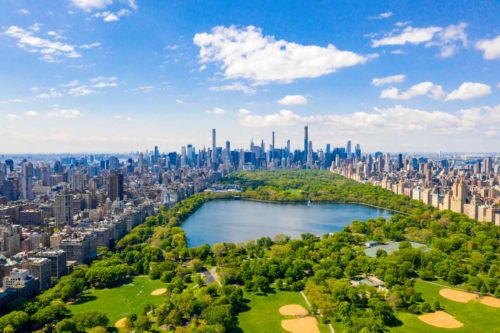
Report | 2020
Coming Back Stronger
A City-Driven Infrastructure Agenda for a Cleaner, More Resilient, More Equitable America
America is in a moment of transition. To recover from the human tragedy and economic crisis induced by the COVID-19 pandemic, we need our federal, state, and local governments working in concert to build back a stronger America—one that is more inclusive, more resilient, and aligned with a pathway that keeps global warming to under 1.5°C. While we need a large infusion of federal spending along with state and federal policy change, cities need to play a key role in contextualizing, designing, and delivering these projects. This report offers ideas across six sectors, highlighting city success stories for each.
- ACCESS AND MOBILITY: Infrastructure spending should reclaim automotive space and funding for people, transit, and mobility alternatives, while also accelerating vehicle electrification.
- BUILDINGS: Infrastructure spending should be focused on rebuilding America’s schools, affordable housing, and commercial buildings through a national buildings upgrade effort that delivers deep retrofits for existing building stock along with efficient, all-electric, grid-interactive new construction.
- POWER: Infrastructure spending should be focused on retiring our remaining coal power and deploying clean energy portfolios, enabled and accelerated by grid upgrades and regulatory reform—in the service of ensuring our electricity is affordable, clean, and reliable.
- BROADBAND: Infrastructure spending should be focused on expanding affordable, widespread broadband access via competition and municipal or public-private partnership programs.
- WATER: Infrastructure projects should be focused on providing clean drinking water for all Americans while managing both drought and flood risk by upgrading our water distribution infrastructure (including lead service line replacement), sewage treatment improvements, a national water conservation program, and green stormwater infrastructure.
- NATURAL SYSTEMS: Infrastructure projects should be focused on protecting and enhancing natural systems (“green infrastructure”), both buffering and serving as an alternative to human-made systems (“grey infrastructure”), while ensuring that every American has access to green space.
Investing in “future-proof” American infrastructure can create much-needed jobs and economic recovery, help confront our massive social inequalities, accelerate the clean energy transition, and prepare our communities to withstand the climate instability that we are already experiencing. Cities drive innovation, are highly effective channels for economic stimulus and infrastructure spending, and have a more intimate understanding of people’s needs than any other level of government. Their role is key.